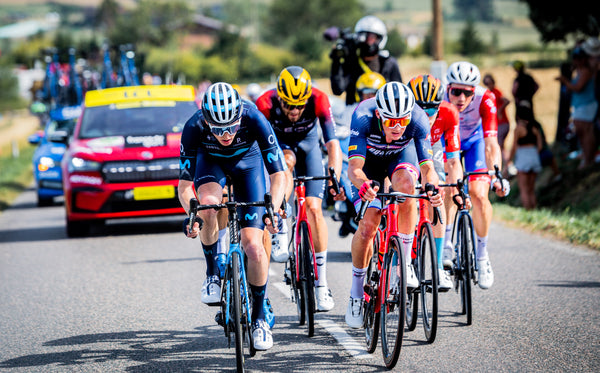The Platonic Form is a philosophical idea which posits that everything in the physical world also exists, in a more perfect form, as a non-physical concept. The Platonic Form is the idea of a perfect example of something, while its manifestation in the real world is imperfect and compromised.
Plato uses the example of a horse in his work Republic. The Form of a horse is abstract, perfect and unchangeable; all horses in the real world are imperfect manifestations – they have individual differences, and in death, even cease to be a horse, but the Form of a horse remains constant.
This philosophical tangent is relevant to stage 13 of the 2022 Tour de France, which finished in Saint-Étienne and was won by Mads Pedersen of Trek-Segafredo, because the break of seven riders that eventually coalesced with 145km to go was about as close to the Platonic Form of the cycling break as the imperfect, flawed real world of bike racing can be. The peloton never stood a chance. It was the perfect break.
Pundits, fans and even cyclists themselves love to look at a stage and declare whether or not it is a day for the break. The classic day for the break is a hilly one which is beyond the capacity of the sprinters, but not tempting enough to the GC riders to try to control or use to gain advantage. (The advent of Wout van Aert means that while there are many stages that are beyond the capacity of the sprinters, there are fewer that are beyond the capacity of the Belgian rider, as the pseudo-mountainous Lausanne stage this year demonstrated.)
The early Alpine stages were days for the break. Bob Jungels won in Châtel and Magnus Cort won in Megève, and it never really looked like they would get caught by the peloton or GC group. Looking further forward, stage 14 to Mende is surely a day for the break – the only GC rider who might fancy his chances of beating Jonas Vingegaard on the final climb and therefore taking a time bonus is Tadej Pogačar and his team does not currently look up to the task of controlling such a hard stage.
Stage 13, however, was much harder to call before the stage. Some described it as a day for the sprinters, and ASO officially designated it a flat stage, even though there were a few lumps and bumps along the way. However, while it might not have been a day for any old break, it was definitely a stage for this break.
It consisted of Filippo Ganna (Ineos Grenadiers), Stefan Küng (Groupama-FDJ), Hugo Houle (Israel-Premier Tech), Fred…

